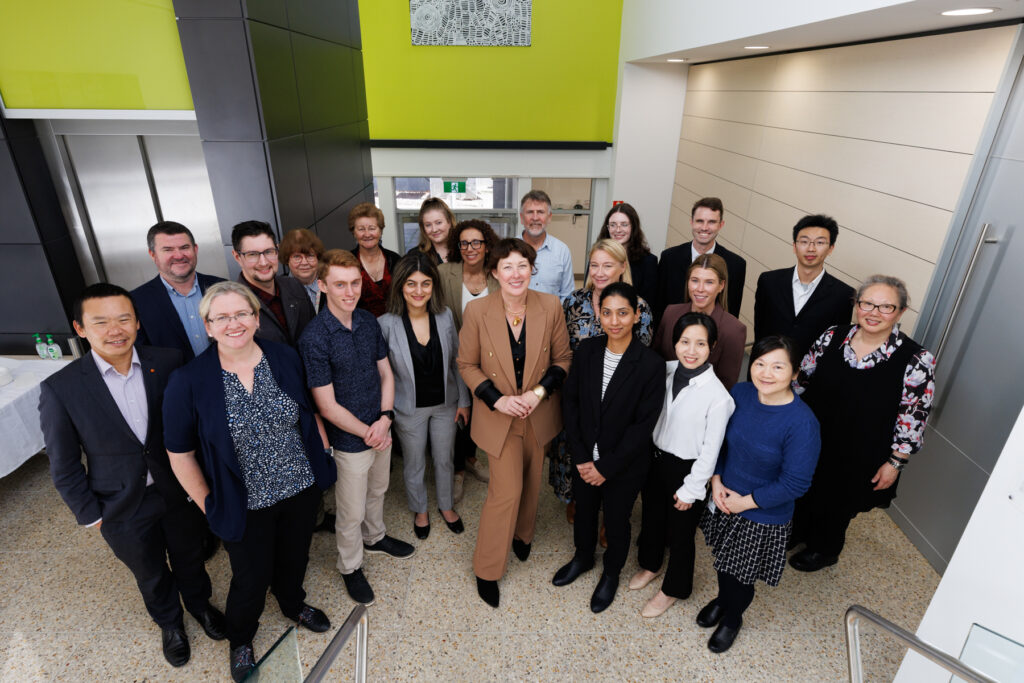Background
Mongolia, like many other countries in Asia, continues to use asbestos. Over 90% of this use is for construction and thermal insulation in power plants and piping systems. Mongolia does not have any mining of asbestos nor manufacturer of asbestos containing material (ACMs). Thus, all asbestos and ACMs are imported from other countries, mainly from China and Russia.(1) The National asbestos profile developed by Ministry of Health (MOH) of Mongolia in collaboration with World Health Organization (WHO) estimated amount of asbestos consumption as 35 thousand tons between 1995 and 2010.(2)
Many developing countries have been following the ILO/WHO Outline for the Development of National Programmes for Elimination of Asbestos-Related Diseases which includes strategic policy, national profile; awareness raising; capacity building; an institutional framework and a national plan of action for the elimination of asbestos-related diseases.(3)
Legislation and past and present use of asbestos in Mongolia
The government of Mongolia adopted this document to the describe the national conditions, consumption and resources in relation to asbestos. Key actions to establish legislative and regulatory framework as well as to promote capacity building for 2009-2014 are divided into 4 phases by the authors as follows:
a) Intersectoral technical working group is established (2009)
The MoH and The Ministry of Labour Social Welfare (MOLSW) established a joint technical working group (Heath Minister’s order in 2011) to assess asbestos consumption and develop a National Asbestos Profile (NAP). Several interagency consultation meetings were conducted by the thematic working group to discuss primary prevention of asbestos-related hazards and prioritize it over economic considerations with learnings from the experiences of Japanese and South Korean experts.
b) The National Asbestos Profile (NAP) is developed (2012)
The NAP characterized that primary uses of asbestos in Mongolia are in thermal power plants, construction, and in railway companies. The NAP concluded that ACMs have been extensively used in construction materials and building industry. Due to booming of construction of apartments and offices and infrastructure (heating, water supplies, roads), usage of ACM sharply increased from 2004 to 2008, in the Capital city.(1, 2, 4)
It should be noted, however, that data on both asbestos consumption and ARDs in Mongolia are limited, rendering it difficult to develop a full NAP.(4-16)
c) Strategic framework and action plans are developed
Based on the findings of the NAP, the working group defined strategic objectives and workplans for 2011-12. The role and responsibilities of stakeholders were elaborated as well as how policy-making and decisions were made. In 2012, the MoLSW included the activity to develop the NAP and policy, awareness raising activities on asbestos into the National Programme of Occupational Safety and Health.(5-6) The fourth objective of this National Programme was the gradual reduction of asbestos use, eventually banning it, and to support the prevention of asbestos related diseases.5 Prevention, registration and surveillance of Asbestos Related Diseases (ARDs) was included in the Action Plan of the National Programme on OSH in 2017.(6)
d) Total ban policy is formulated (2010)
According to the action plans developed by Intersectoral technical working group, the Minister of Health sent a letter to the Chemical Safety Committee (physically located in the Ministry of Natural Resources and Environment) to request their actions in adding asbestos to the list of toxic and hazardous chemicals prohibited for use, as asbestos is known to cause cancer. The National Chemical Safety Committee discussed and approved the proposed list. The Prime Minister, as chair of the committee, endorsed the Government Resolution 192, and the use of asbestos was legally banned in 2010. It was the first policy of the government to ban usage and import of all types of asbestos and ACMs.(7)
e) Power plants are exempted (2011)
After approval of Resolution 192, the Ministry of Energy sent a letter to the National Chemical Safety Committee complaining that substitute materials were expensive and not compatible for use as thermal insulation on hot surfaces.
Due to pressure from the energy sector and inadequate awareness of asbestos hazards, the government changed its legal status on asbestos in 2011which was done through Resolution 176. Article 3.1.4 of the List of Toxic and Hazardous Chemical states restrictions on the use of toxic and hazardous chemicals, which are allowed only at permitted places such as power plants under strict controls with restricted quantities. All forms of asbestos and ACMs are now allowed for use only in thermal power plants for thermal insulation and heat-resistant materials, and only of licensed quantities. Other industries are not allowed to use any form of asbestos.(1, 8, 9)
Safety Instructions for Asbestos Removal work (2020)
Safety Instruction for Asbestos Removal Work was approved by the National Committee of Occupational Safety and Hygiene in February 2020. This document recommends safety practice in asbestos removal work including personal protection measures, isolation of work areas, training of workers, health surveillance and exposure assessment.(13)
Current regulations
We conclude that during 2012 until 2020, there has been little policy changes from 2012-untill now 2020. No party is taking the lead and no thematic working group has been formed. The National Chemical Safety Committee and a secretariat explained verbally and formally to the temporary working group (MOH) that the PM order (2011) constitutes a total ban.
The official explanation is that the policy is still valid, and the country stopped the import and usage of all types of asbestos and ACM in all sectors except for power plants. The authors believe there is a need to improve the enforcement and competence for the detection of ACE materials and to increase inspection.
The increased amount of asbestos consumption between 2005 and 2008 may be related to a rise in the construction sector. There was increased construction until 2008, which then decreased due to the economic situation in Mongolia. It is in this sector that many safer alternative materials are available and should be considered for use. Another issue in Mongolia, not captured by the current data assessment, is the significant past use of asbestos, going back decades.
Reported cases of ARD and the analysis and limitation of data collection
There is very limited data of ARDs cases in Mongolia due to lack of registration or surveillance system of ARDs.(2) According to the national health statistics, 54 cases of mesothelioma were registered in National Cancer Center between 1996 and 2013.10 Average age of the patients who were diagnosed with mesothelioma was 49.7 years. The incidence rate of these cases was 19.2 per 100,000 population, and age-specific incidence rate was 81.5 per 100,000 population for the age-group of 60+ years. The first internationally reported case of ARD was a 47 year-old-woman diagnosed with malignant pleural mesothelioma who worked in a thermal power plant for 28 years.11 8 cases of lung cancer were registered from former workers of three thermal power plants in Ulaanbaatar between 1991 and 2006.(2)
Mongolia surveillance and monitoring mechanisms of ARD
Mongolia has not established an official registration or surveillance system of ARDs. Due to this situation, cases of ARDs are not detected or could be misdiagnosed.(12)
Exposure assessment
Occupational hygiene standard MNS 4990: 2015 set occupational exposure limit for asbestos fibre as 0.1 fibre/cc for 8 hr Time Weighted Average (TWA).(13) There is one laboratory in Mongolia capable of analyzing asbestos fibres in air and in bulk materials that established in 2013. Previous two studies have been conducted to determine the level of occupational exposure to asbestos among workers in a thermal power plant, locomotive repair shop, analytical laboratory and in the construction industry. The average exposure level was 0.75 f/cc in these workplaces and mostly chrysotile asbestos fibres were identified in air sample. Workers insulating pipes in thermal power plants were exposed to the highest level of asbestos exposure which was recorded at 1.13 f/cc.(14, 15) No data are available for environmental exposure to asbestos. In general, due to lack of capacity of assessment of exposure, enforcement of OSH regulation, information and data on asbestos exposure is limited.
Initiatives for capacity-building
Capacity for enforcement and implementation of laws and regulations strengthened in 2011-2014 as a result of advocacy and technical capacity building workshops and meetings. These were conducted for mid-level policy makers, researchers and occupational safety and hygiene inspectors and managers/safety officers/industrial hygienists of state and private sectors. Trainers and inspectors joined the MOH technical working group when the MOH and the MOLSW established the thematic working group which was the main driving force.
The WHO supported several training sessions for specific purposes and target groups conducted jointly with several WHO-CC in Occupational Health of Japan and South Korea. The trainings focused on inspection of ACM, detection of asbestos fibres, safe removal of ACM for customs, occupational safety and hygiene inspectors and researchers. Practical and hands-on training for the diagnosis of lung cancer and other ADRs was conducted every year from 2010-2012. The target audience was medical doctors reading chest x-rays and CT scans as well as specialists on occupational lung diseases and lung cancer.
What are the gaps and the institutional support necessary to address the objective?
Power plants have still been using asbestos as they have been exempted from the 2011 policy (PM’s order). Raising public awareness raising, advocacy and training for target groups are necessary. Refresher training and education as well as educational and training activities are needed for managers and engineers of the power plants and wholesale markets, shops, distributer company staff (who sell construction and building materials) in Ulaanbaatar.
Importantly, the construction and building industry stopped importing and using ACMs from 2011. The inspection agency and customs offices implement the policy. Policy implementation requires human resources and institutional capacity and sustainable operational funding and managerial support. In 2011-2013, customs officers and inspectors in occupational hygiene and safety were trained on sampling and identification of ACMs. The first lab for detecting asbestos fibre was established at the Center for Public Health, MOH. According to a lab person, staffing is adequate, but technical training and local ventilation system for the lab are needed.
Strategies and national programs toward efficient management of asbestos in situ and the elimination of ARD
The NAP provides good evidence and baseline information for policy makers. It has been shown that ACEs (but not raw asbestos) continue to be imported and used for power plants. Building and construction materials are similar. It is clear that the best policy is to ban all imports of asbestos. The intersectoral working group, with support from the WHO, did good advocacy cross sectors and strengthened staff and institutional capacity to assess the situation and enhance awareness of health, environment and labour sector policy makers. It resulted in bringing the right people from the right sectors into the consultations. The intersectoral working group led by MOH was the main driving force which prompted positive changes in the construction and building industry and promoting healthy living environment in new residential areas. Front-line staff in academia, regulatory and inspection and enforcement agencies (customs office) have been trained well and were advocated. This ushered in the PMs order into force within a short period and as result, the import of ACEs reduced sharply from 2011.
There is clear need to revitalize activities by establishing more sustainable thematic working groups as well as building staff and institutional capacity. The NAP should be updated in due consideration of the re-evaluation of the 2011 policy and current policy environment. In view of the current socio-economic, political and legal environment, a revised NAP will assist the government to move forward again with an intention to make policy changes and/or revise the 2011 PM’s order.
Lesson learned thus far
Sustainability depends on commitment of individuals and temporary working group members who participated from various ministries, central institutions and international organizations. Most of the concerned parties have changed their positions, as there has been a high turnover of the government staff at high and medium levels. This situation calls for an establishment of more sustainable thematic working groups and building capacities.
No economic and technological feasibility studies have been conducted in coal fired power plants in the country.











